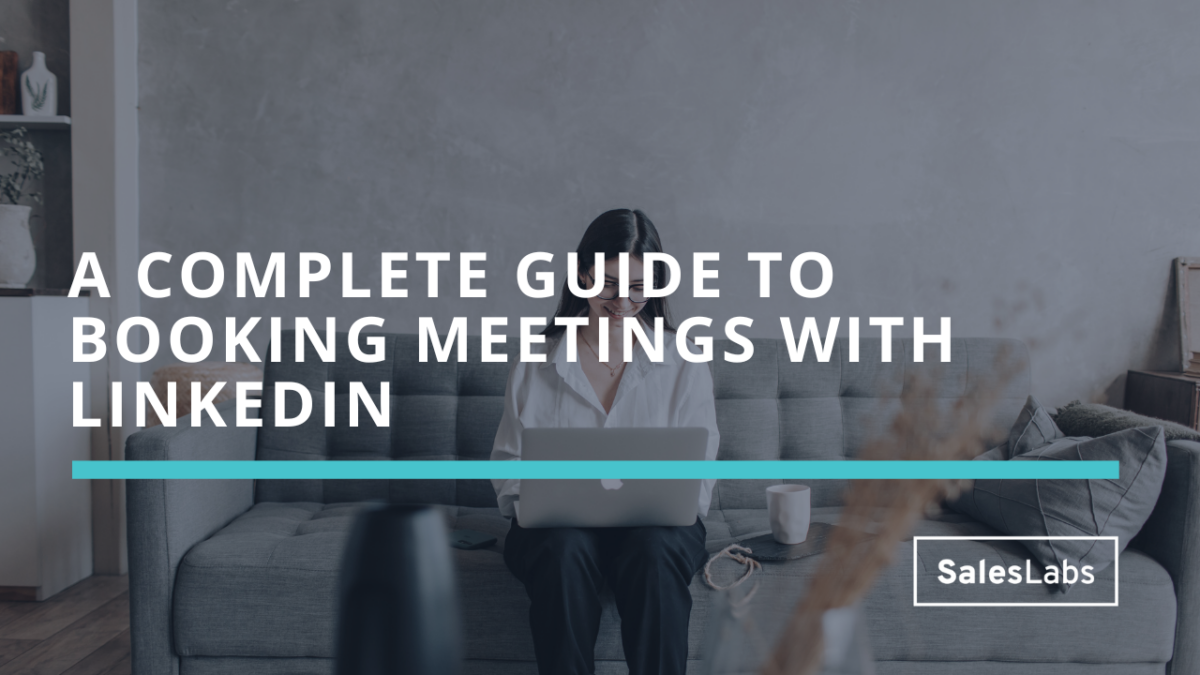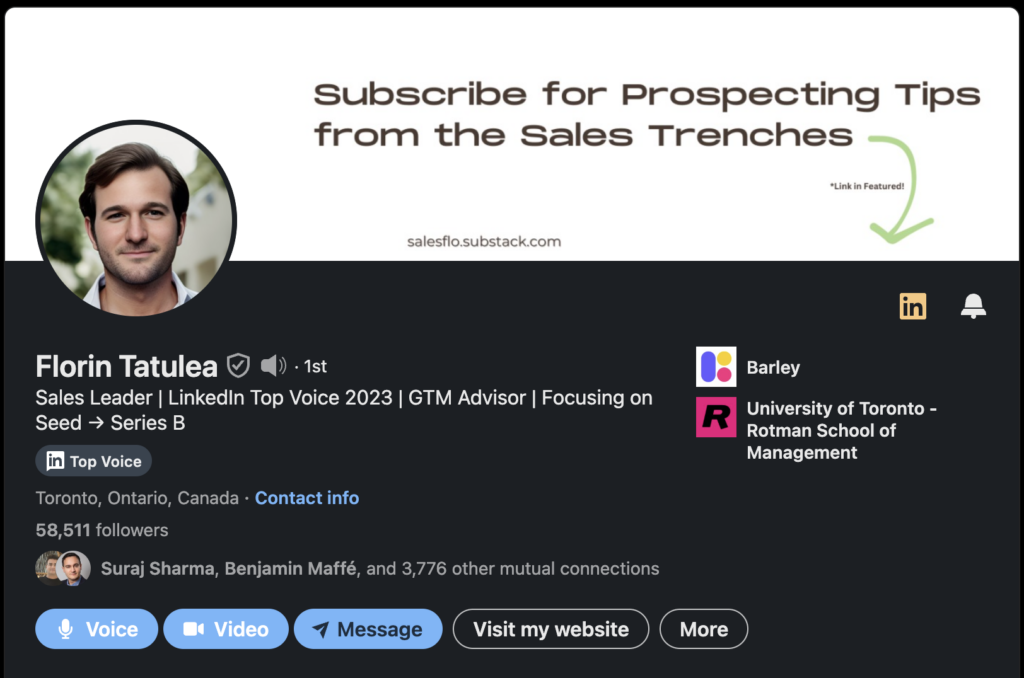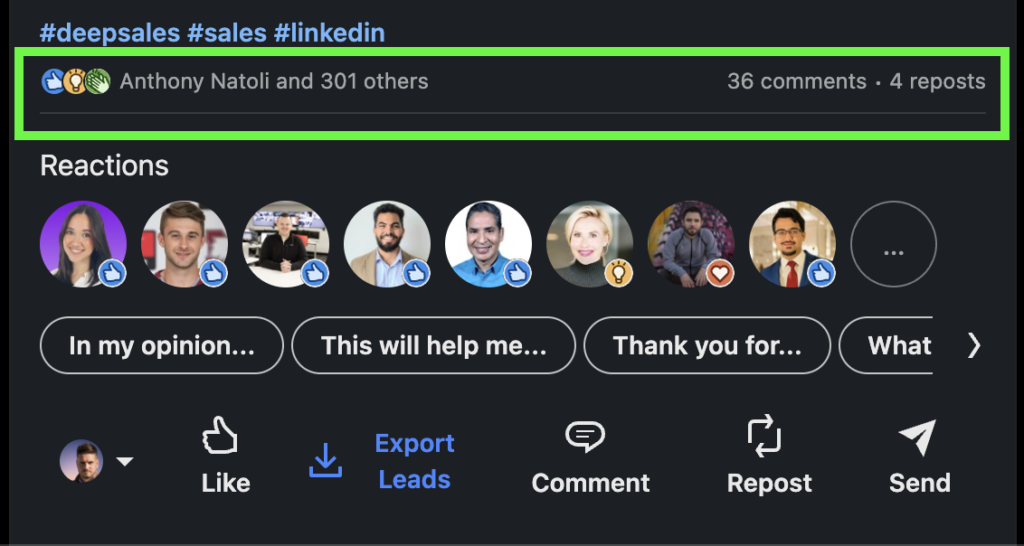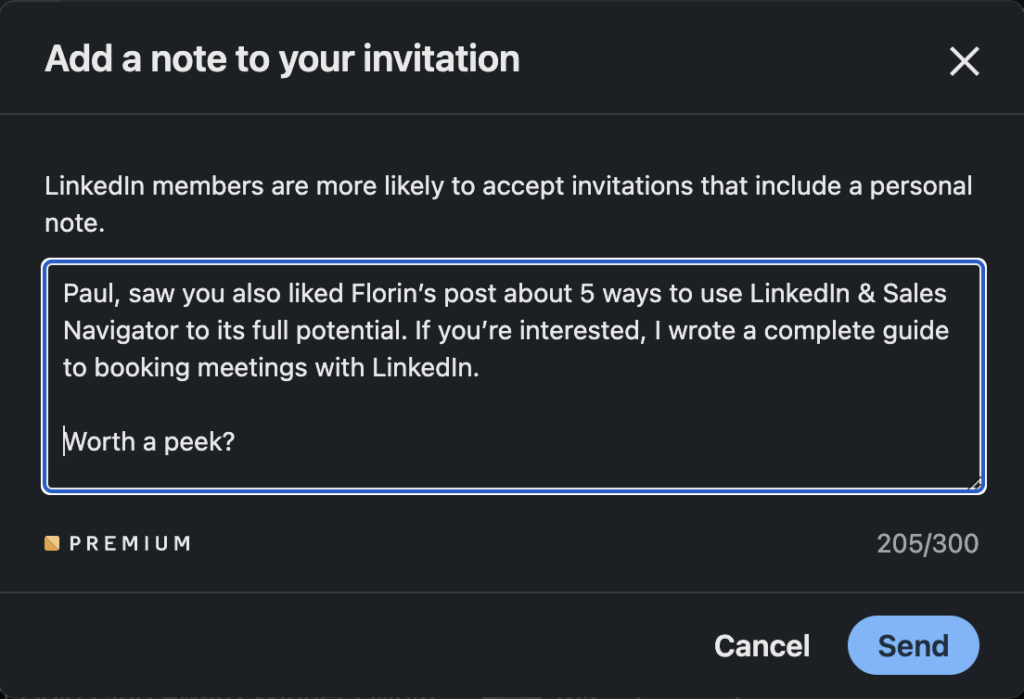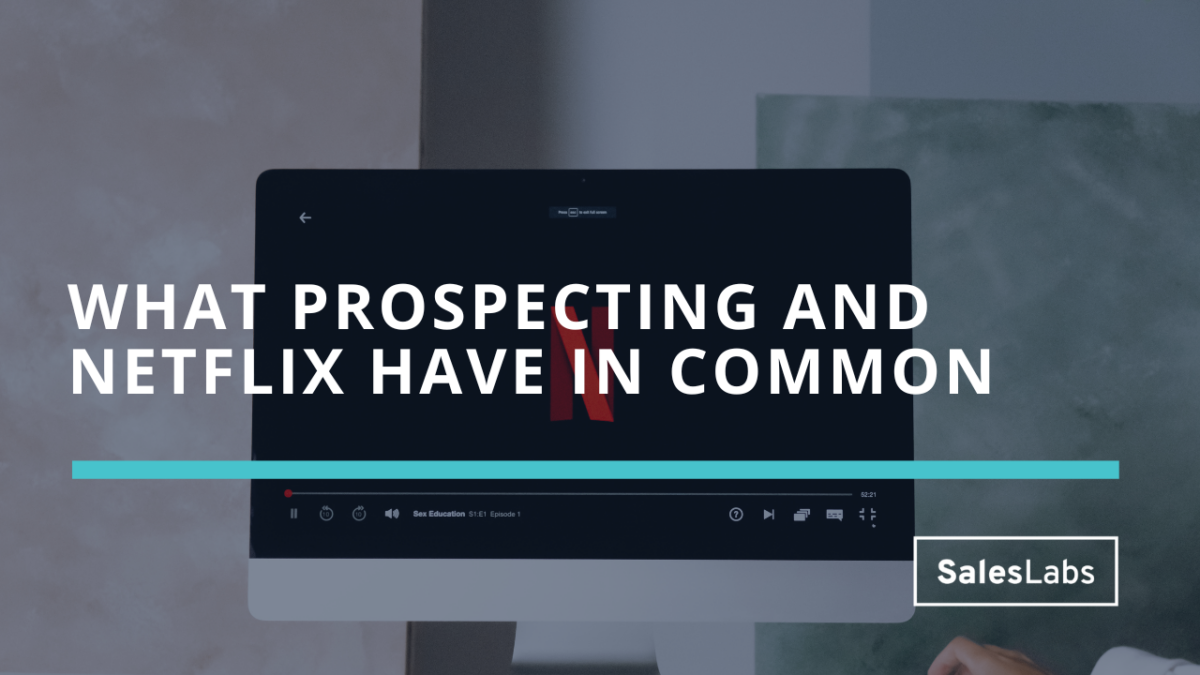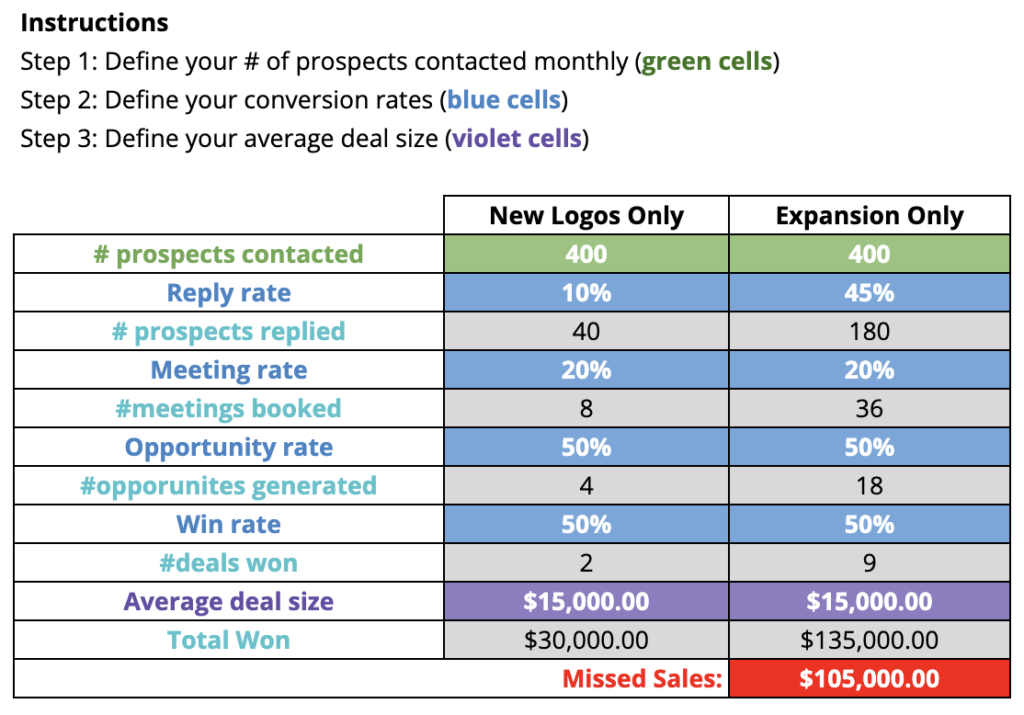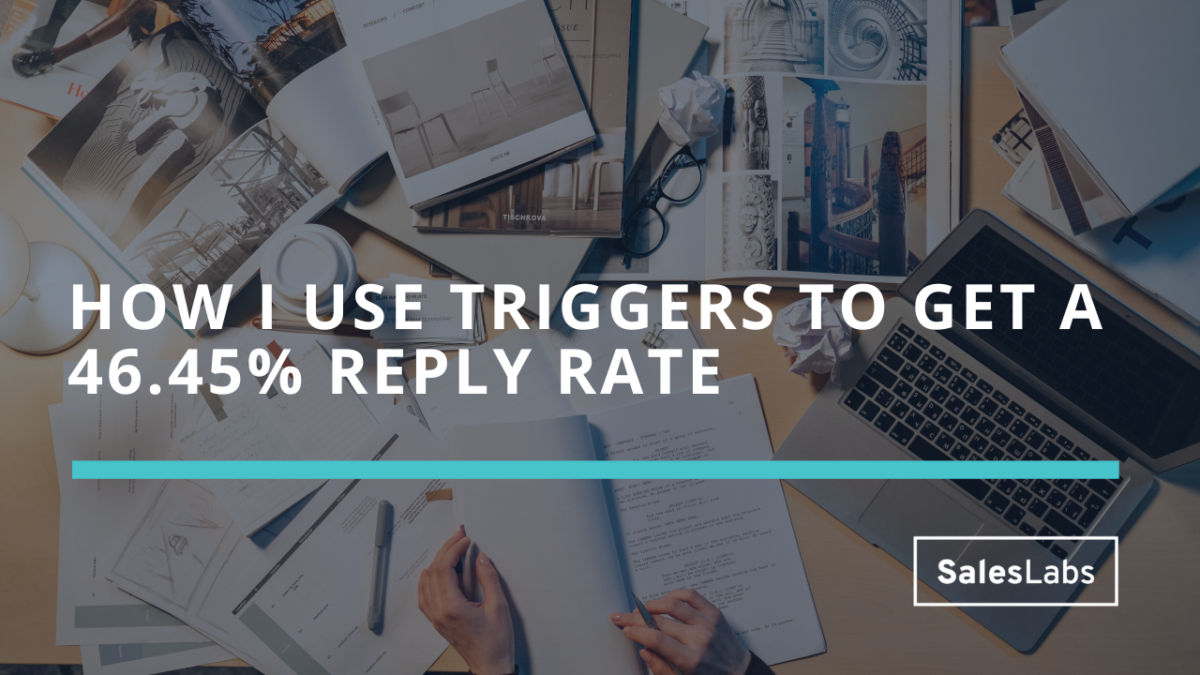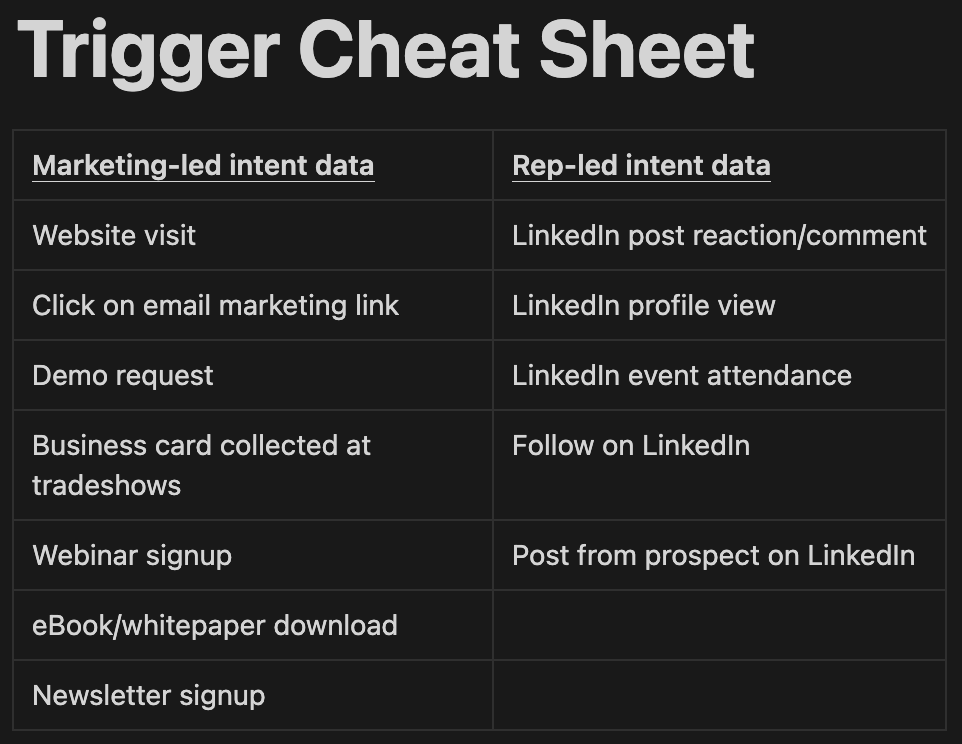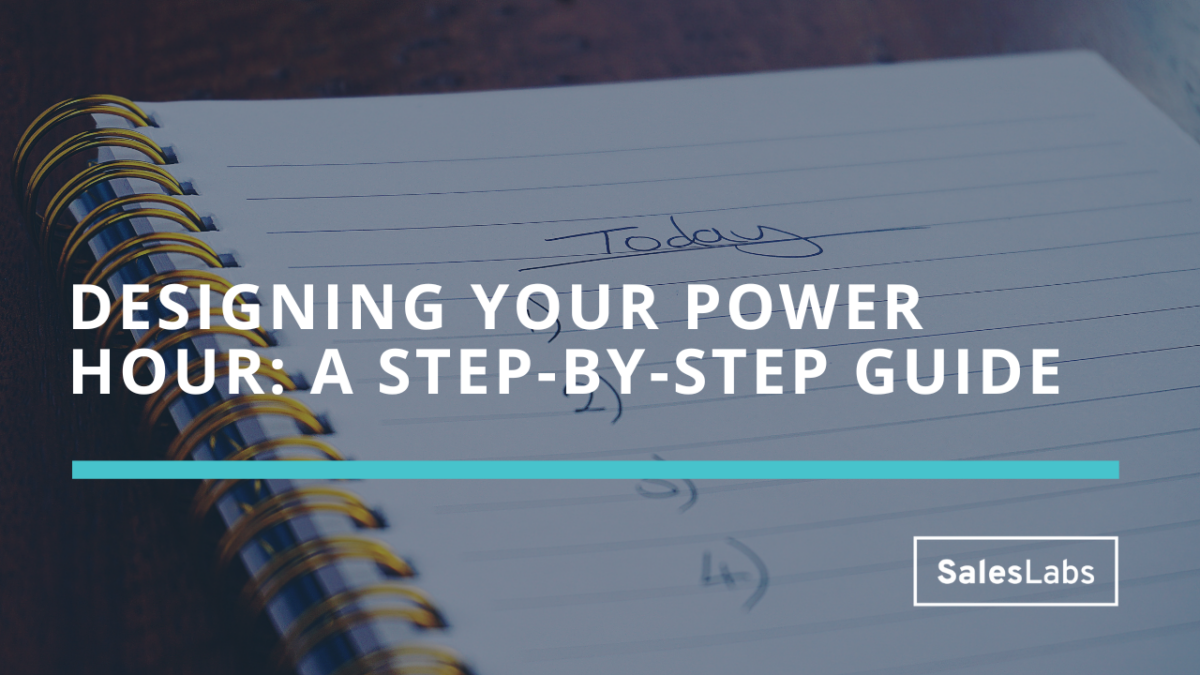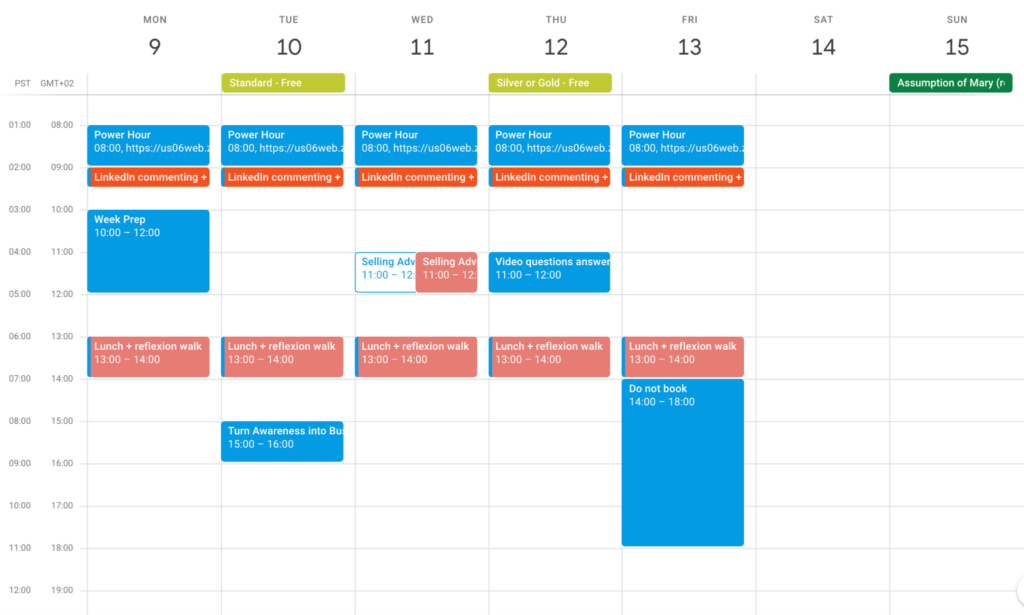How to find your prospect’s problems: A step-by-step guide
In today’s issue, I’ll share the exact process I follow to find prospects’ problems. If you can replicate these steps, you’ll be able to catch the attention of your prospects, because you’ll show them you understand what problems they are trying to solve, in details.
Understanding prospects’ problems is a big mindset shift for many salespeople because they are trained to sell a product, and pitch features and benefits, instead of trying to put themselves in the shoes of their customers.
That’s what I’m going to show you, step-by-step:
Step 1: Understand their goals and metrics
Every prospect you are trying to reach has one or more metrics they are evaluated on. A VP of Sales will be evaluated on revenues, a CFO on bottom-line, a CPO on shipping speed and so on. Your prospects get promoted or fired based on their performance against these metrics.
Your goal when finding prospects’ problems is to get a clear understanding of these metrics, and the goals associated with these metrics.
Here are a few places where you can get an idea of these metrics and goals:
- Podcasts/webinars where your Ideal Customer Profiles are interviewed
- Job descriptions
- Current and past customers
When you have an idea of the metrics your prospects are evaluated on, your next step is to understand their goals. You can ask yourself the following questions:
- Are they trying to maximize or minimize this metric?
- What happens if they miss it? What are the concrete consequences on their jobs/lives?
- Do they have stretch goals?
Below are some examples for different types of prospects:
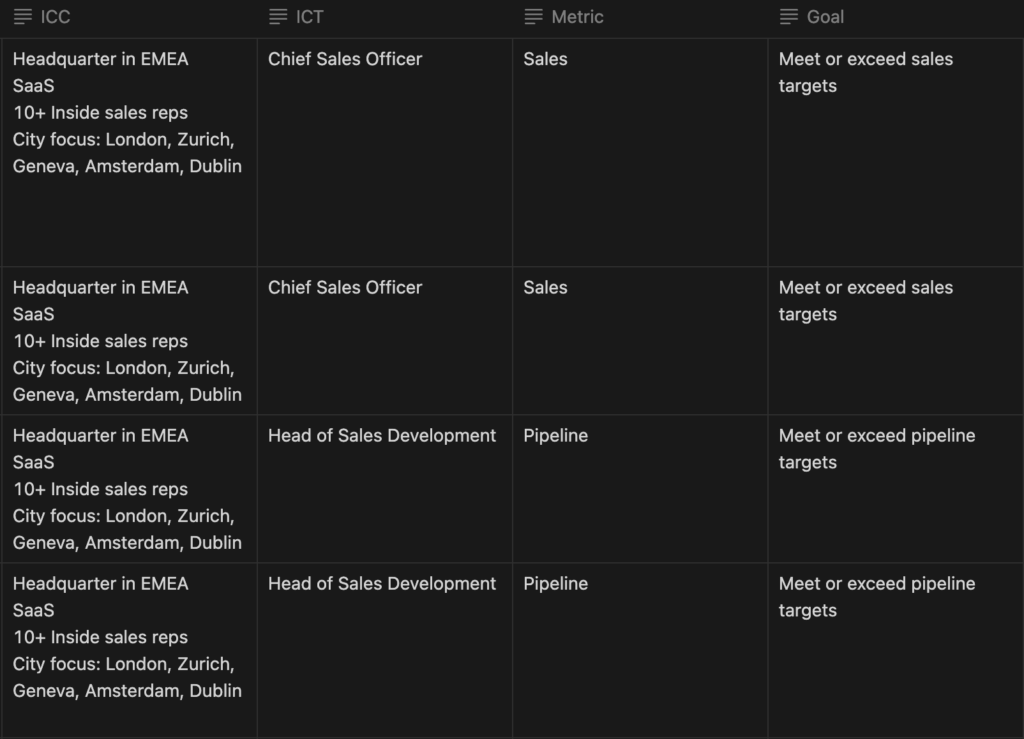
Step 2: List their key initiatives
When you have a clear metric and goal, you need to find out the initiatives related to these goals. Ask yourself the following questions:
- What are they working on right now to achieve their goals?
- What are the tools/services they are evaluating to avoid missing their goals?
Again, look for any information that can help you understand these initiatives in podcasts, webinars, 10-K reports, and so on.
Here’s an example of what an initiative could look like:
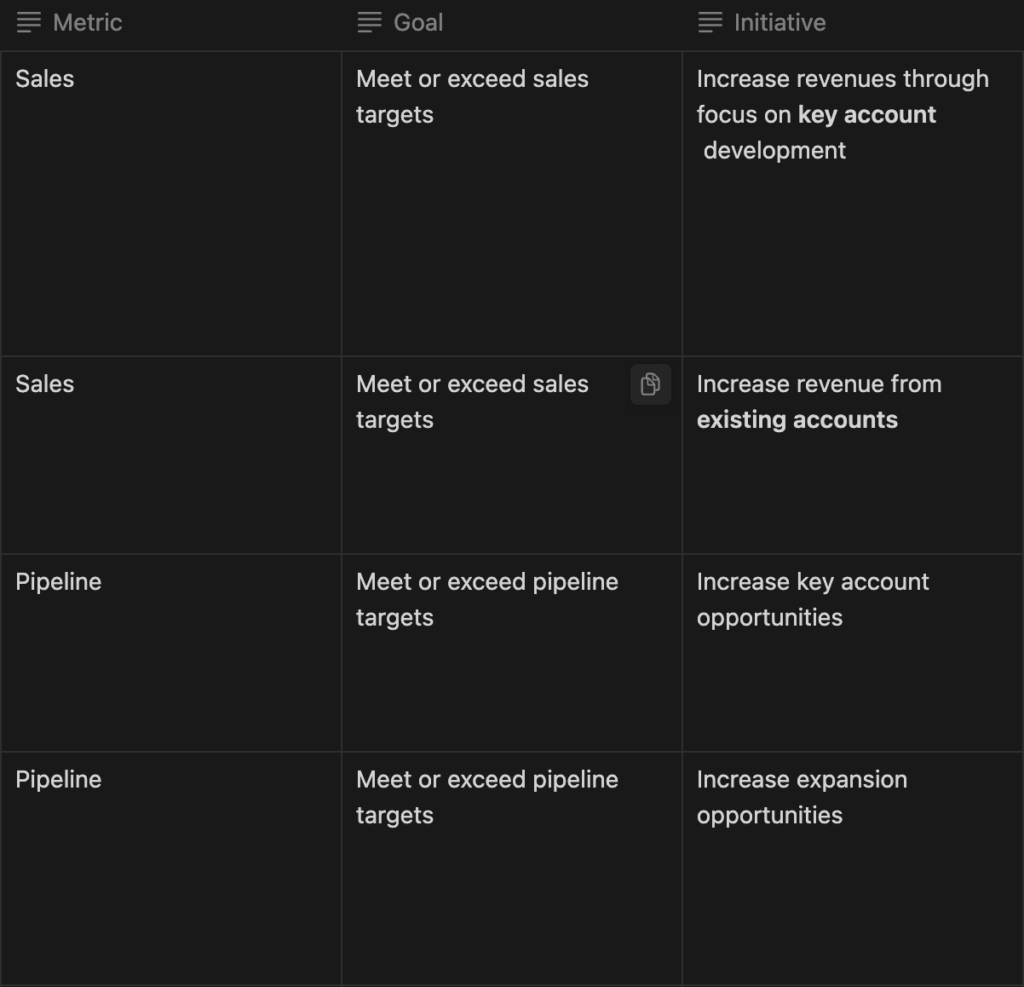
Step 3: Find their problems
Now that you know more about their initiatives, you can start listing problems they would typically face when pursuing these initiatives.
Ask yourself the following questions:
- Are they having a hard time finding/implementing the right tools?
- Did they try other solutions, without success?
- Are they going to miss their goals because they can’t find a service provider to do a job they are incapable of doing?
Here’s an example of problems related to initiatives:
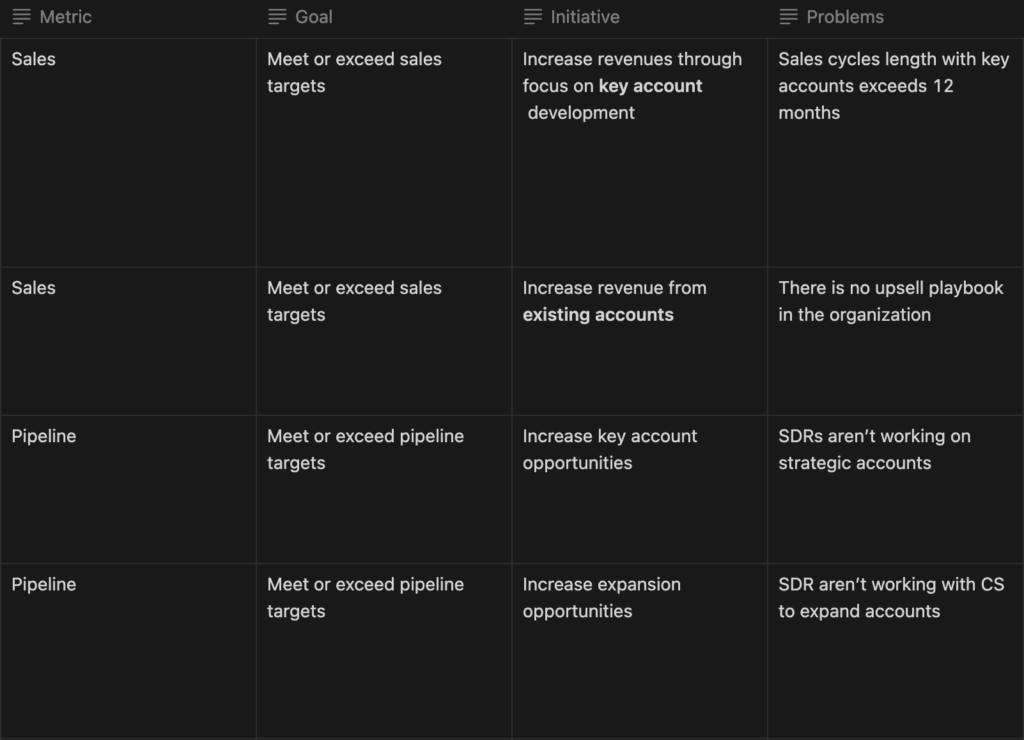
Step 4: Find symptoms
Finally, list the exact symptoms of these problems, so you can highlight them in your prospecting messages.
Problems are often not enough to get a reply. They tend to be vague and full of jargon. For example, “Not having an upsell playbook” is a problem a lot of my prospects have.
Symptoms of this problem are:
- AEs are missing on easy expansion revenues
- Customer Success Reps are only order takers, they have no sales skills
- Expansion metrics are missed, quarter after quarter
I like to compare this with a doctor consultation. When you say “I have a cold”, you’re mentioning a sickness (a problem), but when your doctor asks you about your symptoms, you’ll say you:
- have a runny nose
- have regular headaches
- feel exhausted
- have fever
Think about what is more vivid in your mind? Problems or symptoms? It’s the same with prospects.
Here’s an example of typical symptoms:
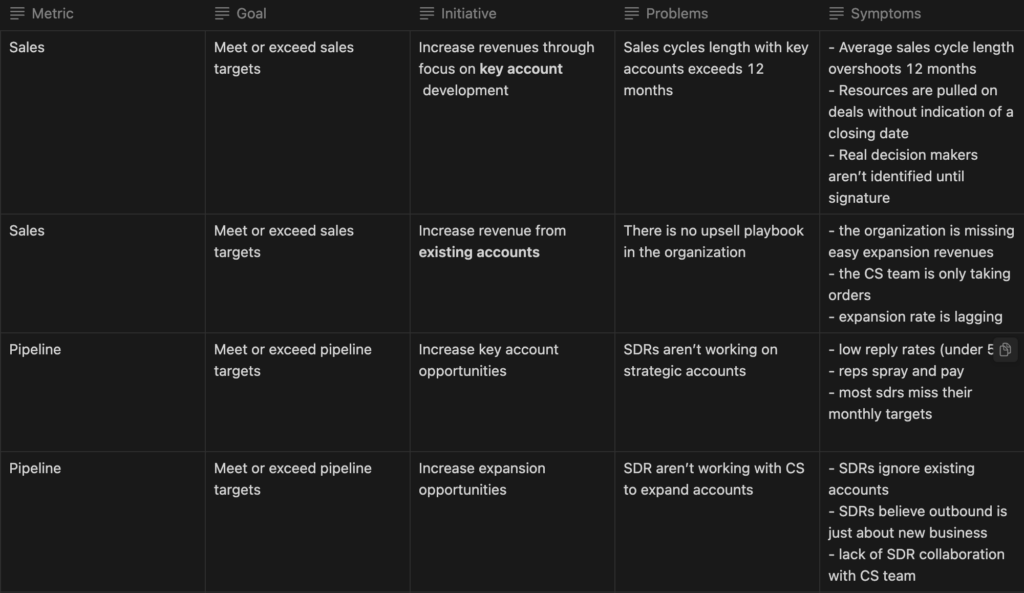
And these are the 4 steps you can follow if you want to find your prospects’ problems.
Hope this helps.
Cheers,
Thibaut
P.S. This is a small preview of my flagship course, The Prospecting Engine. 14 chapters and 114 lessons of instructional video that will teach you how to start conversations, book meetings, and generate a healthy pipeline in 2024 and beyond. (even if you’re just getting started).
P.S. When you’re ready, here are 3 ways I can help you:
→ (NEW) Enroll in The Prospecting Engine
→ (NEW) Need to train your team or invite me as a speaker? Book a call here
Subscribe to the Newsletter
Get my free, 4 min weekly newsletter. Used by 5.900+ salespeople to book more meetings and work when, where, and how they want.
Subscribe to the Newsletter
Get my free, 4 min weekly newsletter. Used by 5.900+ salespeople to book more meetings and work when, where, and how they want.
